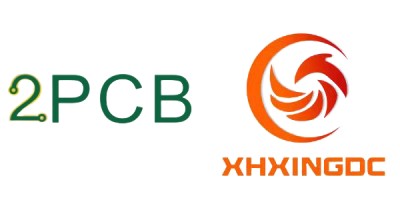1. Crosstalk and wiring are the key points
Traces are particularly important to ensure the proper flow of electricity. If the current is coming from an oscillator or other similar device, it is especially important to keep the current separate from the ground plane or not run parallel to another trace. Two parallel high-speed signals will produce EMC and EMI, especially crosstalk. The resistor path must be kept as short as possible and the return current path must be as short as possible. The return path trace should be the same length as the send trace.
For EMI, one is called the “violating trace” and the other is the “victim trace.” Inductive and capacitive coupling will affect the “victim” trace due to the presence of electromagnetic fields, thereby generating forward and reverse currents on the “victim trace”. In this case, ripple will occur in a stable environment where the transmission length and reception length of the signal are almost equal.
In a well-balanced environment with stable traces, the induced currents should cancel each other out, eliminating crosstalk. However, we live in an imperfect world and such things do not happen. Therefore, the goal is to keep crosstalk on all traces to a minimum. The effects of crosstalk can be minimized by keeping the width between parallel traces twice the trace width. For example, if the trace width is 5 mils, the minimum distance between two parallel traces should be 10 mils or greater.
As new materials and components continue to emerge, PCB designers must continue to deal with electromagnetic compatibility and interference issues.
2. Decoupling capacitor
Decoupling capacitors reduce the negative effects of crosstalk and should be located between the power and ground pins of the device. This ensures low AC impedance and reduces noise and crosstalk. To achieve low impedance over a wide frequency range, multiple decoupling capacitors should be used.
An important principle for placing decoupling capacitors is to place the capacitor with the smallest capacitance as close as possible to the device to reduce the inductive effect on the trace. Place this particular capacitor as close to the device’s power pins or power traces as possible, and connect the capacitor’s pad directly to a via or ground plane. If the trace is long, use multiple vias to minimize ground impedance.
3. Ground the PCB
An important way to reduce EMI is to design the PCB ground layer. The first step is to make the ground area as large as possible within the total PCB board area, which reduces emissions, crosstalk, and noise. Special care must be taken when connecting each component to a ground point or ground plane. If you do not do this, you will not be able to take full advantage of the neutralizing effect of a reliable ground plane.
A particularly complex PCB design has several stable voltages. Ideally, each reference voltage has its own corresponding ground plane. However, if there are too many ground layers, it will increase the manufacturing cost of the PCB and make the price too high. A compromise is to use ground planes in three to five different locations, each of which can contain multiple ground sections. This not only controls the manufacturing cost of the circuit board, but also reduces EMI and EMC.
A low impedance grounding system is important if EMC is to be minimized. In a multi-layer PCB, it is better to have a reliable ground layer rather than a copper thieving or scattered ground layer, because it has low impedance, provides a current path, and is the best reverse signal source .
The length of time it takes for the signal to return to the ground is also very important. The time it takes for the signal to go back and forth from the signal source must be equal, otherwise an antenna-like phenomenon will occur, making the radiated energy become part of EMI. Likewise, traces carrying current to/from the signal source should be as short as possible, if the source and return paths are not equal in length, ground bounce will occur, which will also create EMI.
4. Avoid 90° angles
To reduce EMI, avoid 90° angles between traces, vias, and other components, as right angles will produce radiation. At this corner, the capacitance will increase and the characteristic impedance will change, causing reflections and subsequently EMI. To avoid 90° angles, traces should be routed to corners at at least two 45° angles.
5. Be careful when using vias
In almost all PCB layouts, vias must be used to provide conductive connections between different layers. PCB layout engineers need to be especially careful because vias create inductance and capacitance. In some cases, they can also create reflections because the characteristic impedance changes when making vias in the trace.
Also keep in mind that vias add trace length and need to be matched. If it is a differential trace, vias should be avoided as much as possible. If this cannot be avoided, vias should be used in both traces to compensate for delays in the signal and return paths.
6. Cable and physical shielding
Cables carrying digital circuits and analog currents can create parasitic capacitance and inductance, causing many EMC-related problems. If twisted pair cable is used, coupling levels are kept low and the resulting magnetic fields are eliminated. For high-frequency signals, shielded cables must be used, with both front and back grounded to eliminate EMI interference.
Physical shielding is to enclose the entire or part of the system with a metal package to prevent EMI from entering the PCB circuit. This shield acts like a closed conductive capacitor to ground, reducing antenna loop size and absorbing EMI.

